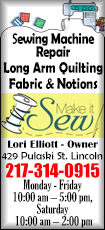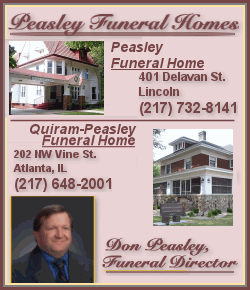|
 Of more than 1,200 sleep clinic patients, those with sleep apnea
were twice as likely as others to suffer a workplace injury and
three times more likely to have one that was related to failed
vigilance - such as tripping, falling or getting burned - the
researchers report in the journal Thorax. Of more than 1,200 sleep clinic patients, those with sleep apnea
were twice as likely as others to suffer a workplace injury and
three times more likely to have one that was related to failed
vigilance - such as tripping, falling or getting burned - the
researchers report in the journal Thorax.
Patients with sleep apnea tend to get very fragmented sleep, noted
senior study author Najib Ayas. “A lot of times people may not
remember being woken up, it’s like someone going in there and
shaking them awake many times per hour,” said Ayas, an associate
professor of medicine at the University of British Colombia in
Vancouver.
“They wake up and they feel quite tired during the daytime and we
think that that’s probably what accounts for the increased risk,”
Ayas told Reuters Health by email.
An estimated 22 million Americans suffer from sleep apnea and the
vast majority of cases are undiagnosed, according to the American
Sleep Apnea Association.
With obstructive sleep apnea, a person’s airway collapses repeatedly
during sleep, causing a brief period of not breathing, often
followed by sudden gasping, coughing or snoring. This can occur
hundreds of times per night and disrupts the brain’s normal sleep
cycle, leading to daytime fatigue and other symptoms.

To examine the link between sleep apnea and workplace injuries, the
study team looked at a subset of patients of the British Colombia
Hospital Sleep Laboratory between May of 2003 and July 2011.
All 1,236 patients had come in to be screened for obstructive sleep
apnea; 994 were diagnosed with the condition and 242 were not.
The researchers analyzed data on workplace injuries for the entire
group over the previous five years collected by WorkSafeBC, a
worker’s compensation provider.
The records showed that 111 patients experienced occupational
injuries in the past five years, representing about 9 percent of the
group.
People with sleep apnea were twice as likely as those without the
condition to have experienced workplace injuries: Just over 5
percent of people without sleep apnea got injured, while nearly 10
percent of those with sleep apnea suffered injuries at work.
Patients with sleep apnea were nearly three times more likely to
suffer an injury that was related to vigilance or attentiveness,
including those caused by falls, exposure to heat or electricity,
car crashes and slipping or tripping.
[to top of second column] |

When the researchers adjusted their results to take into account
gender, body fat, alcohol use, age and type of work, the overall
connection between apnea and injuries weakened somewhat. But
patients with sleep apnea were still 76 percent more likely than
those without the condition to experience workplace injuries.
Patients with more severe sleep apnea were not more likely to get
hurt than those with moderate or mild apnea, the study team notes.
In this study, people with sleep apnea were being compared to people
who were coming in with other sleep issues, noted Eva Lindberg, a
professor at Uppsala University in Sweden who studies sleep
breathing disorders. The injury risk associated with apnea might be
even higher if sleep apnea patients were compared to people with no
sleep issues at all, said Lindberg, who was not involved in the
study.
“It is of course important for all workers to be safe at work and
avoid occupational injuries,” Lindberg said by email. “The risk is
highest at workplaces where a high vigilance is needed.”
It may be important for employers to screen workers for sleep apnea
in workplaces with high injury risk, Lindberg added.
In another recent study, long-haul truck drivers who adhered to
employer-mandated use of sleep apnea treatment were five times less
likely to have vehicle accidents than those who didn’t use the
treatment (see Reuters Health story of March 21, 2016, here: http://reut.rs/1WLUuwQ).
“If you have characteristic symptoms of sleep apnea you should
probably talk to your doctor,” said Ayas, adding that the treatment
of sleep apnea is very effective in reducing sleepiness.
SOURCE: bit.ly/1Zt6kNX Thorax, online March 15, 2016.
[© 2016 Thomson Reuters. All rights
reserved.] Copyright 2016 Reuters. All rights reserved. This material may not be published,
broadcast, rewritten or redistributed.

 |